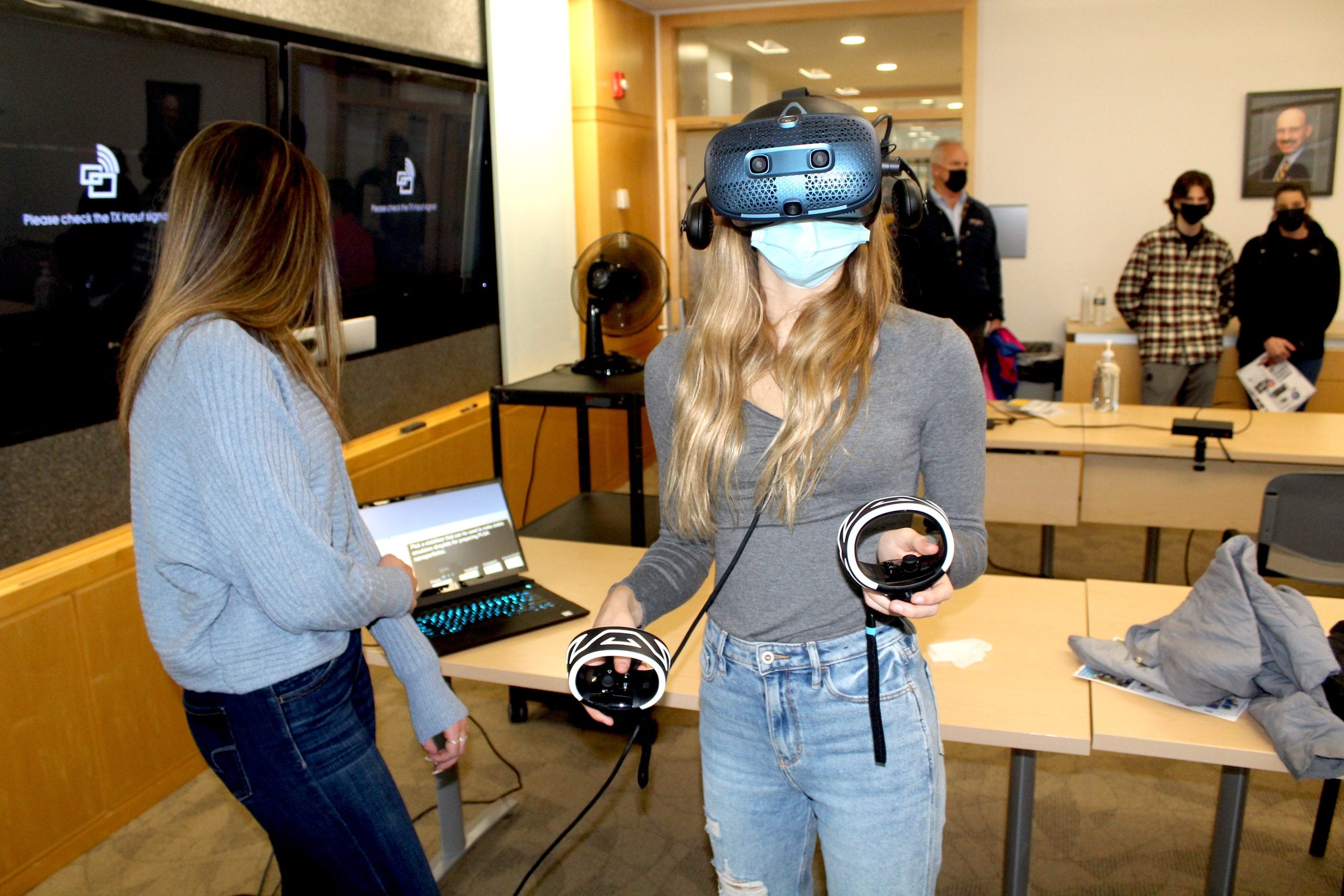VR is the latest advancement in the URI College of Pharmacy’s 3-D program
Imagine shrinking down to the size of a single molecule and flying through the human body, getting the chance to watch the body’s biological processes at the molecular level. URI College of Pharmacy students are doing just that — virtually, of course — giving them a unique understanding of how drugs really work.
The College’s 3D system and virtual reality teaching and researching program is unique among pharmacy colleges in the country. Using VR headsets and attached hand controllers, students can watch nano-particles interact with each other, witness cell-culture in process, and see precisely exactly how drugs from Aspirin to Methotrexate affect molecules in the body. The program uses some commercial programs, but many of the virtual reality apps are custom-made by computer science students at URI.
“Users can ‘fly’ into a human body or shrink down to the size of a molecule to watch how drugs actually interact with various diseases and biological processes,” said Research Assistant Professor Chris Hemme, who leads the VR program along with Professor Bongsup Cho. “It gives students a clearer understanding of how drug processes work when they can actually see them in action. And it provides a unique perspective for researchers to make new discoveries.”
Hemme has worked with Roy Bergstrom and computer science students from the ITS Innovation Solutions Student Technology Assistant program to create a virtual museum on the history of Aspirin, one of the oldest and best-researched drugs in existence. Cho has developed a VR application of how the well-known cancer drug Methotrexate works on a molecular level. Nearly all (93 percent) respondents in a post-class survey reported feeling confident in understanding the drug’s mechanism after participating in the VR experience.
Other pharmacy professors have taken advantage of the system to enhance their specialties. Assistant Professor Matt Bertin uses the system top teach a course on natural products. Youngken Medicinal Garden Coordinator Elizabeth Liebovitz is working on an augmented reality system that will allow users to walk around the garden and learn about the plants they are looking at. Assistant Professor Jie Shen developed an app demonstrating the synthesis of nanoparticles. Assistant Professor Jyothi Menon teaches cell culture virtually.
“Cell-culture training is a complex process, so particularly if you are training undergrad students without a lot of lab time, it can be a difficult experience,” Hemme said. “So they created this virtual cell culture room, where students can go in and train in an environment that looks real. This is where they really started to take advantage of 3D modeling. They were even able to make realistic lab equipment that students can actually hold and move around.”
The VR system was born out of the College’s 3D teaching system, which Cho has been growing for more than 20 years. The program began as an animation program to make videos showing how certain drugs work. Thanks to a Champlain Foundation grant, the College was able to buy the same advanced animation software used to create the movie Toy Story, allowing the team to make ever more intricate videos. Those videos, which are available on YouTube channel “URIanimation,” have racked up nearly 2 million views.
The 3D system took another leap forward during the construction of Avedisian Hall in 2012, which included a 3-D projection theatre on the building’s first floor. Another Champlain grant led to the purchase of an advanced 3-D printer, allowing students to create actual models of drug molecules. Virtual reality was the next step in the process.
“There was this progression from a drawing of the molecular structure, then the 3D printed version, and now the VR version of how the drug works on the molecular level,” Cho said, noting the National Institutes of Health is pursuing a similar system. “In science, visualization is a must. This is an excellent combination of 3D technology. It really helps students understand mechanisms and drugs when they can see how they actually work in virtual reality. No other pharmacy schools have this combination of 3D technologies available for student learning. VR just happens to be the latest of this venture. Technology is evolving, so we are evolving with it.”

